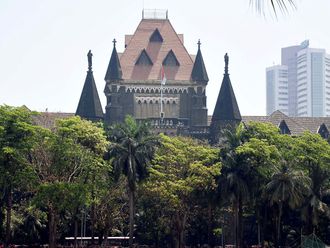Mumbai: India’s central bank left interest rates unchanged on Tuesday as it supports a battered rupee but said it will roll back recent liquidity tightening measures when stability returns to the currency market, enabling it to resume supporting growth.
While bond markets cheered, the rupee resumed its decline as some investors worried that India will struggle to defend the currency without increasing rates or further tightening liquidity.
As expected, the Reserve Bank of India left its policy repo rate at 7.25 per cent but struck a dovish tone as it cut its growth forecast for Asia’s third-largest economy to 5.5 per cent for the fiscal year, from 5.7 per cent previously.
It held bank’s cash reserve ratio at a record low of 4.00 per cent.
The RBI said liquidity tightening steps taken two weeks ago to defend the rupee “will be rolled back in a calibrated manner as stability is restored to the foreign exchange market, enabling monetary policy to revert to supporting growth with continuing vigil on inflation.”
While the benchmark 10-year bond yield dropped as much as 13 basis points to 8.03 per cent, the rupee extended its falls to 59.83 per dollar from 59.55 before the decision, putting it close to its level when the RBI implemented emergency measures on July 15.
“Markets will test the RBI again — we are going to test 60 soon — and possibly this will provoke new RBI measures,” said Dariusz Kowalczyk, senior economist ex-Japan Asia, Credit Agricole CIB, Hong Kong. “The Bank’s credibility is at stake now that it is targeting primarily the currency.” The rupee fell to a record low 61.21 to the dollar on July 8, when it was down about 10 per cent since the start of 2013.
Many economists expect the rupee to remain under pressure until New Delhi finds ways to attract inflows. India is weighing options including an overseas bond issue and increasing interest rates on deposits held by non-resident Indians (NRIs).
“I do not think the RBI will reverse the current tightening steps (while) the rupee remains around the 60 to a dollar level.
Only the issue of NRI bonds or an extended period of loosening from the Fed can reverse the rupee’s fortunes,” said Anjali Verma, economist at PhilipCapital in Mumbai.
The last policy statement of RBI Governor Duvvuri Subbarao’s five-year tenure, unless it is extended, repeated a call on the government to take urgent steps to bring down a current account deficit that hit a record 4.8 per cent of GDP in the last fiscal year.
“It should be emphasised that the time available now should be used with alacrity to institute structural measures to bring the CAD down to sustainable levels,” Subbarao said.












